Jade plants are easier to care for than most people think, even for beginners. They grow very well either indoors or outside, and can live for many, many years.
In this complete jade plant care guide, I will show you all you need to know for the best success. We’ll cover everything, from water, light, and soil, to pest control, fertilizer, troubleshooting common problems, and much more.
I have been growing jade plants, both indoors and outside, for a few decades. In fact, I still have the very first one I ever bought waaaay back in 2001, and it’s one of the oldest plants I own.
When I got it, it was a tiny thing in a 4″ pot, and now it’s about 3′ tall and wide (it’s the one in the photo above). Since then, I’ve added several others to my collection (you’ll see some of them in the pictures below). Every one of them is thriving, and I love them all.
Needless to say, I was very excited to write this guide to share my wealth of knowledge and expert hands-on experience with all of you.
Quick Jade Plant Care Overview
| Scientific name: | Crassula |
| Classification: | Succulent plant |
| Common names: | Jade plant, Money plant |
| Hardiness: | Zones 9-11 |
| Temperature: | 55-85°F |
| Flowers: | White or pink, blooms in winter |
| Light: | Full sun to partial shade |
| Water: | Allow soil to dry between waterings, do not overwater |
| Humidity: | Little to none |
| Fertilizer: | General purpose plant food in spring and summer |
| Soil: | Fast-draining, sandy soil |
| Common pests: | Mealybugs, scale, spider mites |
Information About Jade Plants
Jade plant (Crassula) is a perennial succulent that is native to parts of South Africa and Mozambique. In nature, they can reach heights of 6′ tall or more, and are often used as shrubs in warm climates.
They’re also known by the common name “money plant”. But don’t confuse it with other plants that go by the same common name, because they require very different care…
Different Types Of Jade Plants
There are lots of different types of jade plants, so you can grow a nice variety of them if you’d like to. I have several in my collection, and I adore every one of them. Here are a few of my favorites…
- Crassula ovata – This is the common jade plant variety that everyone knows and loves. It has rounded, flat leaves, and can grow to become a large shrub with a very thick trunk.
- ‘Gollum’ jade plant – Also called E.T. fingers or baby toes, this variety has really cool tubular shaped leaves that are long, narrow, and rounded.
- Crassula ovata ‘Hobbit’ – Often used interchangeably with the one above as they look very similar, this is commonly called “Shrek Ears” or “Ogre Ears” because the tubular leaves are wider on top as if they are tipped with suction cups.
- Dwarf jades – As the name suggests, dwarf varieties are simply a smaller version of the regular one. They look exactly the same, but have smaller leaves and will only grow to be a few feet tall.
- ‘Jitters’ – A unique variety that has thin, wavy, rippled leaves that are lighter green than the other types.
- Crassula arborescens – Also called a “Silver Dollar”, this gorgeous specimen has wide silver/gray leaves with red tips.
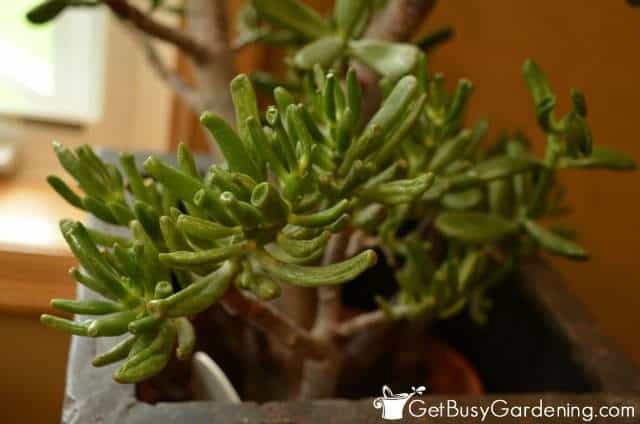
Flowers
Many people are surprised to learn that, with the proper care, jade plants can flower. In warmer climates where they grow outside year-round, they bloom during the winter. But it’s very uncommon indoors without help.
To get your jade plant to bloom, you need to give it similar conditions to what it experiences when it’s outdoors.
The trick is to give it tons of light during the summer. Then, expose it to cooler (but never freezing) temperatures in the fall, and allow the soil to dry out.
When you bring your jade back inside in the fall, put it in a sunny spot, and keep the soil dry. You should start seeing flower buds in a few weeks.
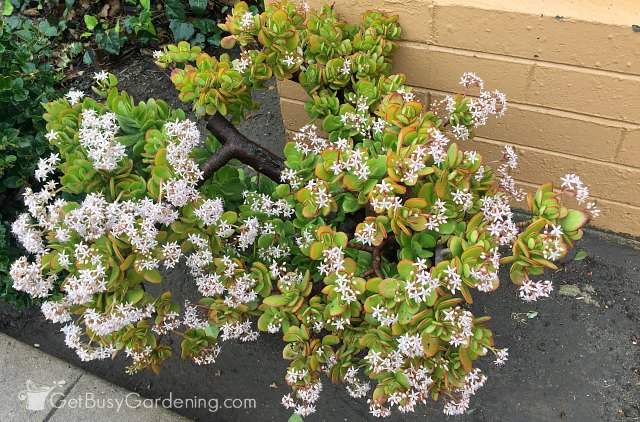
Crassula Toxicity
According to the ASPCA website, jade plants are toxic to dogs and cats if they ingest them.
My cats have never touched mine, but it’s a good idea to keep them out of reach if your pets like to snack on plants, just in case.
Where To Grow Jade Plants
If you live in a warm enough climate, you can grow your jade plant outside year-round. But they also do very well as indoor houseplants.
Hardiness
Jade plants are hardy down to zone 9. They can handle a bit of cold, and are even tolerant of light frost. But they will eventually die if it stays cold for too long.
If you live in an area with harsh winters, then you’ll either need to bring your plant indoors for the winter, or keep it as a houseplant.
Location
The best location to grow your jade plant is a sunny spot with dry soil. Outdoors, plant it in a spot where the ground is very sandy and fast-draining. Indoors grow your potted jade in a sunny, south-facing window.
You could keep it indoors year-round, or put it outside during the summer to give it a growing boost. Just make sure the pot has holes in the bottom, and bring it back inside before it drops below 60°F in the fall.
Related Post: Debugging and Cleaning Potted Plants Before Bringing Them Indoors
Jade Plant Care & Growing Instructions
For the most part, caring for jade plants is easy. But they do have some pretty specific growing requirements. So, for best success, follow my detailed instructions and tips below.
Watering
The biggest mistake that people make with jade plant care is overwatering, and this is their #1 cause of death. Too much will cause root and stem rot, quickly killing your plant.
You can learn exactly how to properly water your jade plant in this guide, but here are a few quick tips:
- Let the soil dry at least 2-3″ deep before giving your plant more.
- When it’s time, water deeply until it starts running out the bottom holes, and let it drain away completely.
- Give your plant less in the winter, and slightly more during the hot summer months.
- If you struggle with getting it right, get yourself an inexpensive soil moisture gauge to make it easy.
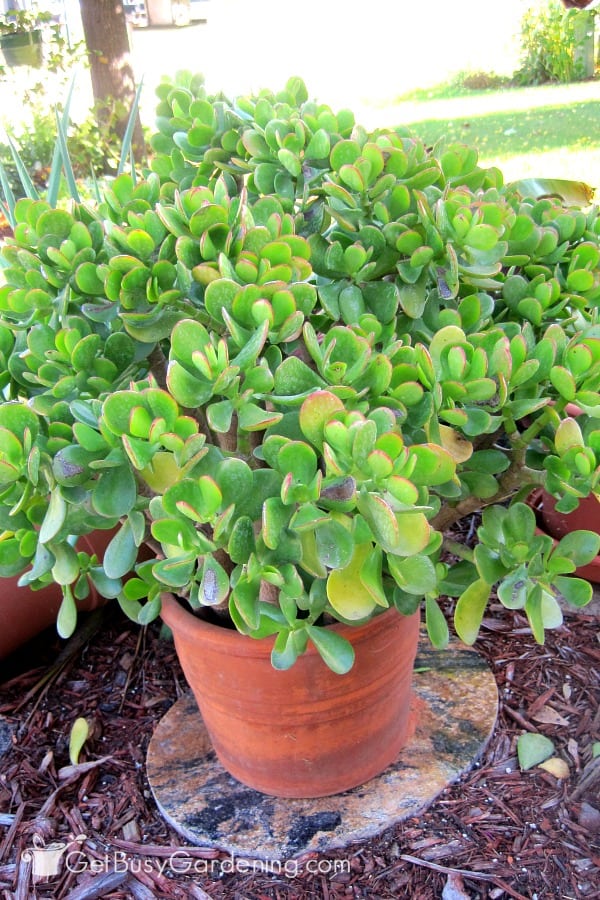
Light Requirements
Though they will tolerate partial shade, jade plants grow best in a full sun location. If it’s too dark, especially indoors, the stems and branches will become weak, thin, and leggy.
With enough sunlight, the stems and leaves will be thick and compact, and the trunk will turn brown and woody at the base. Also, the leaves or tips of your jade plant will turn red, making them even more beautiful.
Here’s are my tips to figure out the ideal amount light for your plant:
- Indoors – Place your plant in a sunny, south-facing window. If you don’t have enough natural sunlight in your house, then add a grow light to supplement.
- Outside – Grow your jade plant in a full sun to partial shade location. If it gets too much shade, then the leaves will stay green and your plant won’t flower.
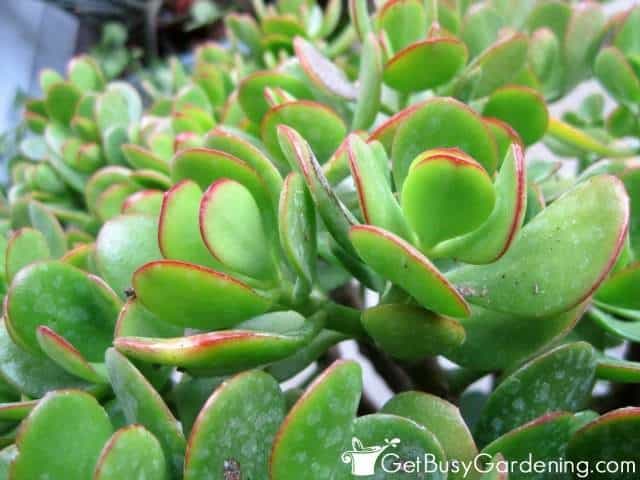
Temperature
Jade plants grow their best when the temps are between 55-85°F. They can handle occasional frost, but they’re not very cold hardy.
They’ll also survive brief periods of freezing temperatures, but will start to suffer if it’s cold for too long. So make sure to protect your plant or bring it indoors if it’s going to stay below 45°F outside.
On the flip side, they can handle the heat in the summer. But the leaves can start to shrivel in extremely hot and dry weather. So you should give your jade a little extra water during extended heatwaves.
Best Soil
Using the correct soil for your jade plant is a crucial part of their care. They need a porous and quick-draining mix. General purpose potting soils hold too much moisture, and can cause your plant to rot.
You can buy succulent soil, get a gritty commercial mix, or you can make your own by mixing coarse sand, potting soil, and perlite.
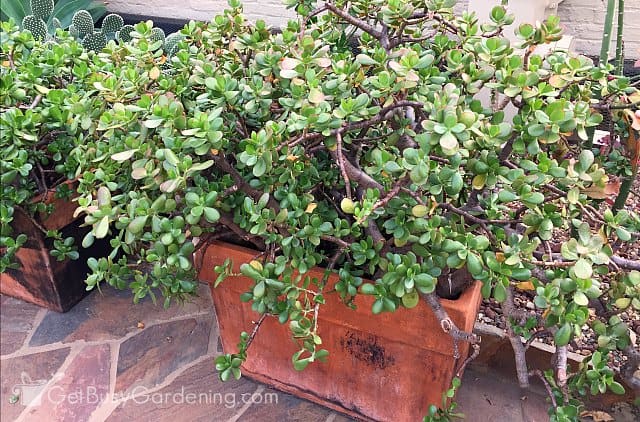
Repotting
Jade plants have very shallow roots, so they can live in the same pot for many years. In fact, it’s better to keep your plant a little root-bound, rather than repotting it too often.
When the time comes, choose a container that is 1-2 sizes larger than the current one. I recommend using an unglazed clay pot, but plastic or another type will work, as long as it has drainage holes in the bottom.
Fertilizer
You don’t need to worry too much about fertilizing as a part of your regular jade plant care routine. But it will help to encourage faster growth and flowers.
Apply a general purpose liquid monthly during spring and summer, or top-dress with slow-release granules once or twice.
Jades go into a dormant state during the colder months, and you should let them rest. So don’t fertilize during the fall and winter, or the new growth will probably be weak and leggy.
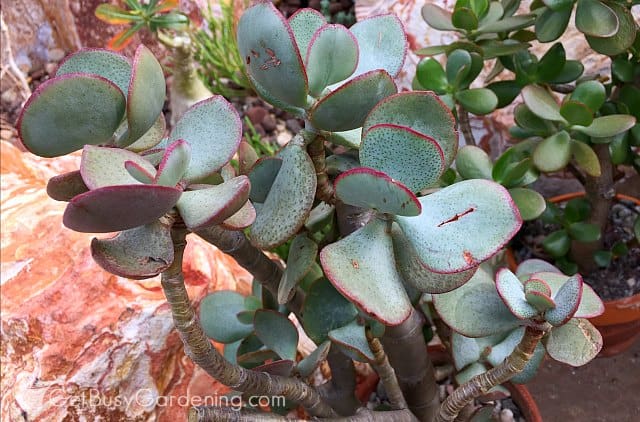
Pest Control Tips
Healthy jade plants don’t usually have problems with pests. But sometimes mealybugs, scale, or spider mites can attack them, especially indoors.
You can spot-treat small infestations by soaking a cotton swab in rubbing alcohol and using that to remove the bugs. For a larger or persistent outbreak, treat your plant with neem oil or a insecticidal soap.
Jades can be sensitive to some types of sprays though. So test any product that you want to use on a couple of leaves first to make sure there’s no damage before you treat the whole plant.
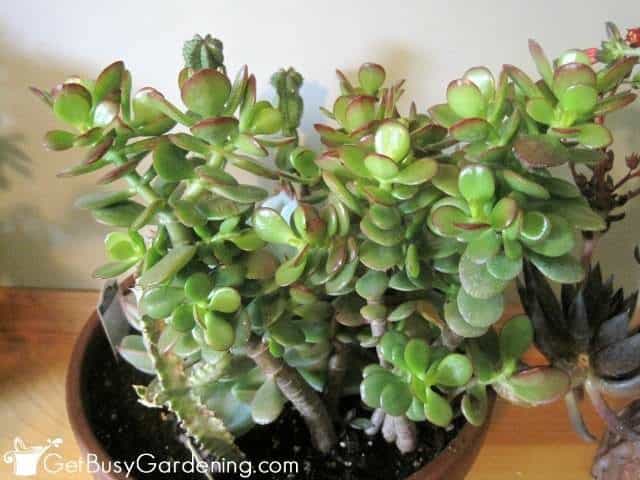
Pruning
Regular pruning is another important part of jade plant care. It will help to keep the foliage compact, and encourages the stems and the trunk to grow thicker.
Pinch off the new tips as they form in the spring or early summer, and use a sharp pair of precision pruners to trim leggy growth and encourage branching.
Get my full step by step instructions for when and how to your prune jade plant here.
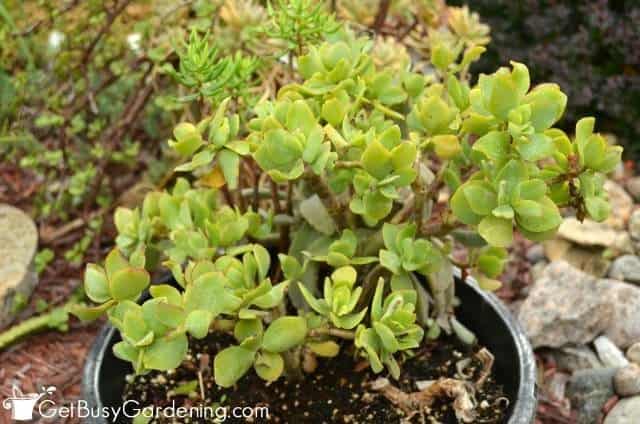
Propagation Tips
Jade plants are extremely easy to propagate, and you can grow tons of new babies by rooting either stem or leaf cuttings.
Allow the cut area to dry for a few days, then dip it in rooting hormone. Plant it in a slightly moist, well-drained soil mix, and in a few weeks it will form roots.
If you want to learn more about how to do it, then check out my detailed step-by-step jade plant propagation instructions here.
Troubleshooting Common Problems
In this section, I’ll help you troubleshoot some of the most common jade plant care problems you may have, with tips for how to fix them.
Leaves Or Branches Falling Off
When the leaves or branches start dropping off, it’s almost always caused by improper watering (usually too much), but it could be from a bug infestation.
Inspect your plant for signs of bugs, and treat any that you find. Ensure the soil dries completely before giving more, but never to the point where the leaves start shriveling or the plant droops. Use a moisture gauge to get it just right.
Mushy Or Rotting Stem Or Leaves
When the stem, branches, or leaves are brown and mushy, then it means they are rotting because of excessive moisture.
If they’re rotting on the top of your jade plant, then you can just prune off the affected parts. Otherwise, if the main stem is mushy, then you’ll have to take healthy cuttings to start new plants.
Leaves Turning Brown
This could be caused by improper watering or sunburn. If the brown leaves are soft and mushy, then they’re rotting from overwatering. Otherwise if they’re dried up and crispy, then your plant isn’t getting enough moisture
Ensure you’re giving your jade the correct amount of moisture, and harden it off before moving it into the full sun to prevent burning.
Trunk & Stems Turning Brown
It’s normal for the main trunk and branches to turn brown and become woody with age, and it means that you’re doing a great job of caring for your jade plant. However, if smaller stems suddenly turn brown after moving them into the direct sun, it is from sunburn.
In that case, move your jade back to the shade, and slowly acclimate it to the full sun over a period of a few weeks.
Shriveling Or Drooping Branches Or Leaves
When the leaves or branches shrivel, that usually means your jade plant isn’t getting enough moisture.
However, it can also be a sign that the stem has rotted. If the base is not mushy, then water your plant more often. Otherwise, treat it for rot.
Roots Growing On The Stem Or Branches
When roots grow on the stem or branches, they are called “aerial roots”. Though it’s not always a problem, this can be triggered by under watering, and also happens when the main stem is rotting.
Ensure your jade is getting enough moisture, and check the entire stem for signs of rot. If all is good, then you can just prune off the stems with aerial roots if they bother you, or leave them be.
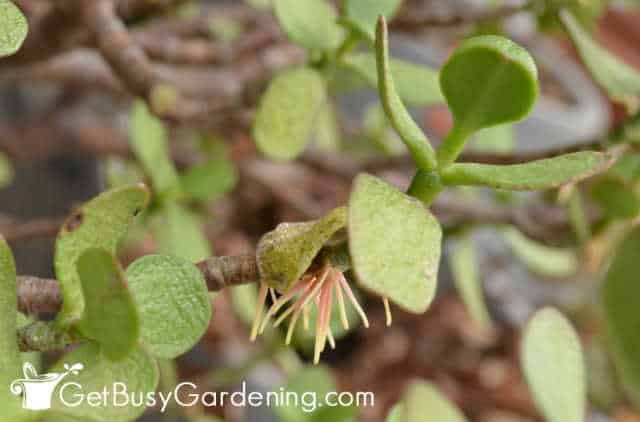
FAQs
Below I will answer some of the most frequently asked questions about growing jades. If you can’t find the answer to your question here, ask it in the comments below.
Is a jade plant indoor or outdoor?
You can grow jade plants either indoors or outdoors, depending on where you live. They aren’t cold hardy though, so you must move them indoors in freezing weather (anywhere less than zone 9).
Do jade plants go dormant?
Though jade plants don’t go fully dormant, they do go into a resting state in the cooler winter months. During this time, growth will slow, and they don’t require as much water.
Does a jade plant like to be root-bound?
Yes, jades like to be root-bound, and can live in the same pot for many years. Their root system isn’t very large, so keeping them in a smaller pot will help prevent overwatering.
Jade plants are easy to care for, and beautiful too. If you follow my detailed tips in this guide, you’ll have no problem keeping yours growing and thriving for decades to come.
If you want to learn all there is to know about maintaining healthy indoor plants, then you need my Houseplant Care eBook. It will show you everything you need to know about how to keep every plant in your home thriving. Download your copy now!
Share your jade plant care tips in the comments section below.


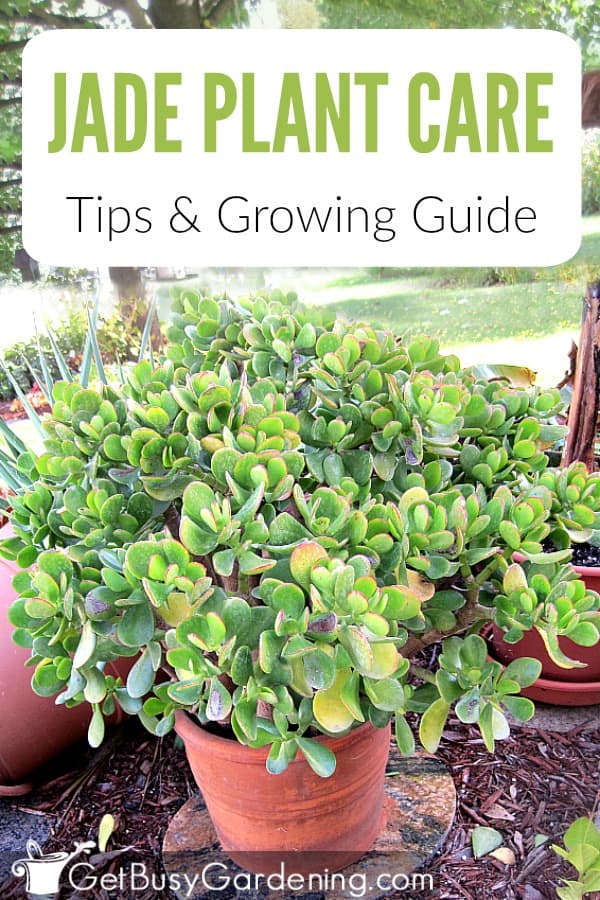
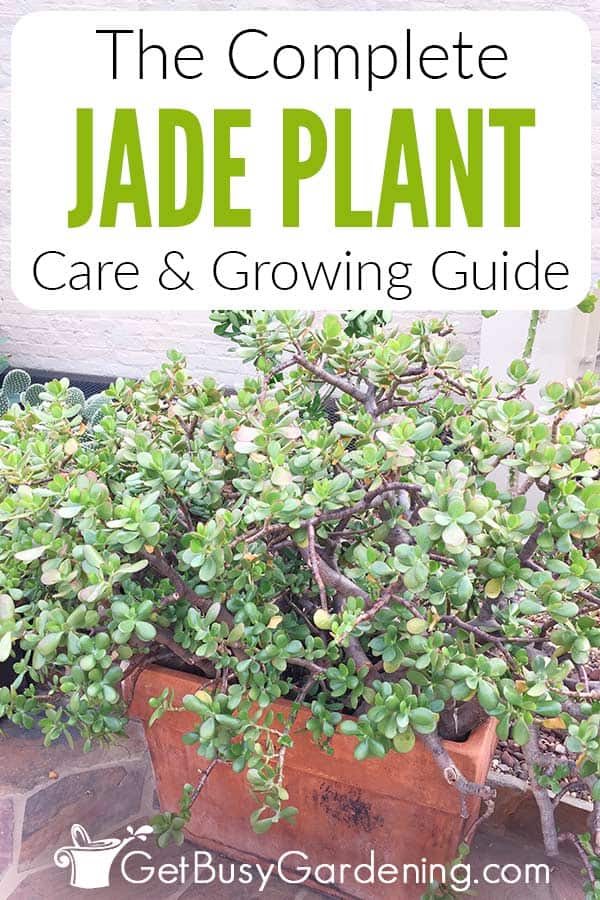
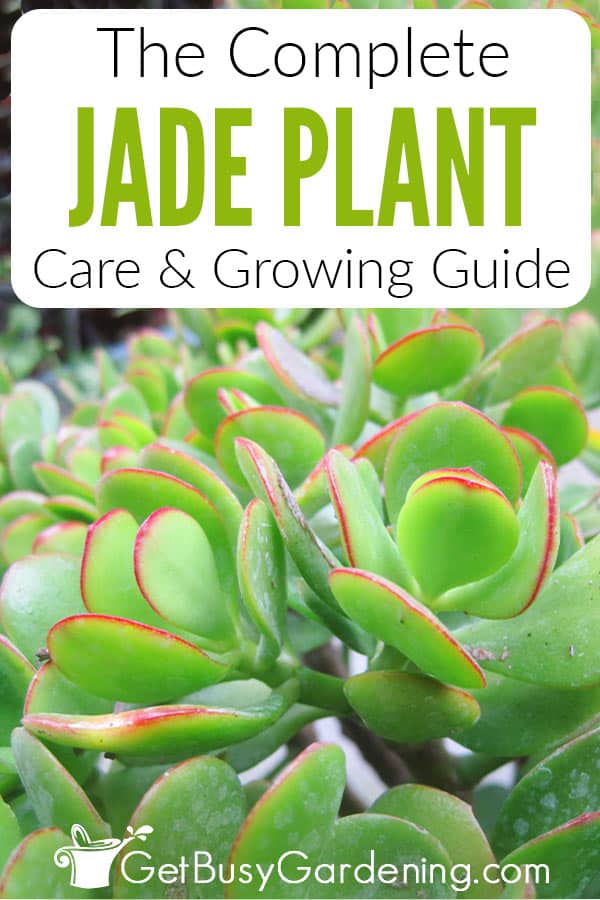
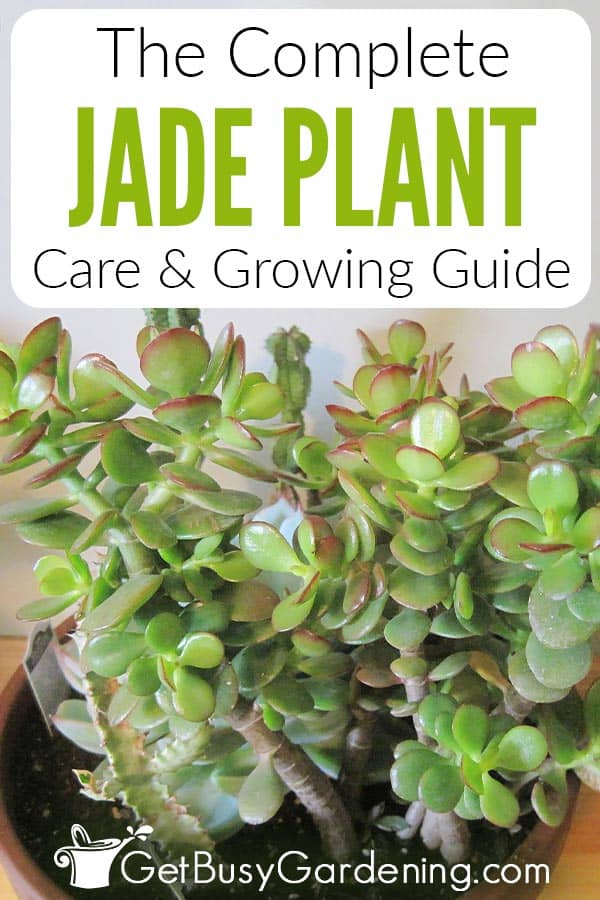
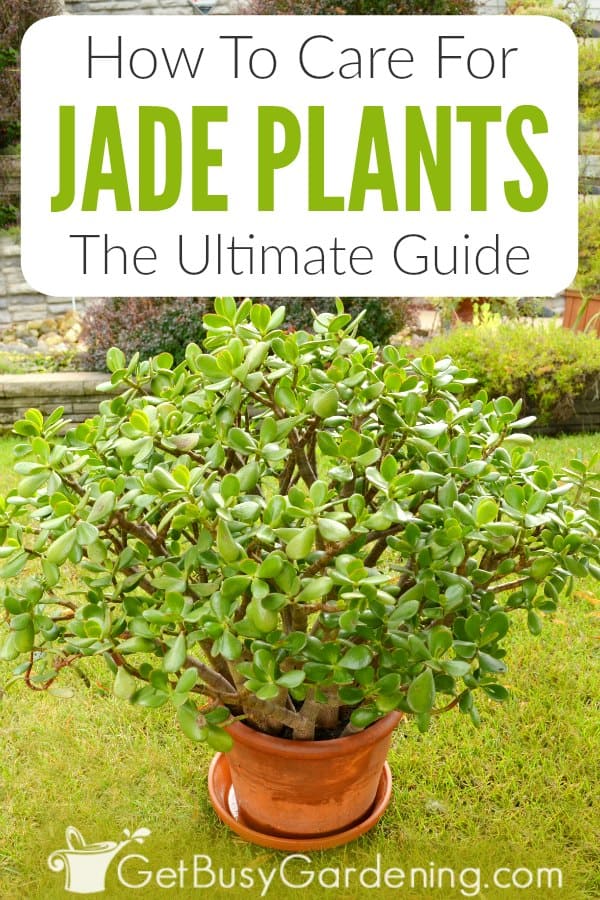
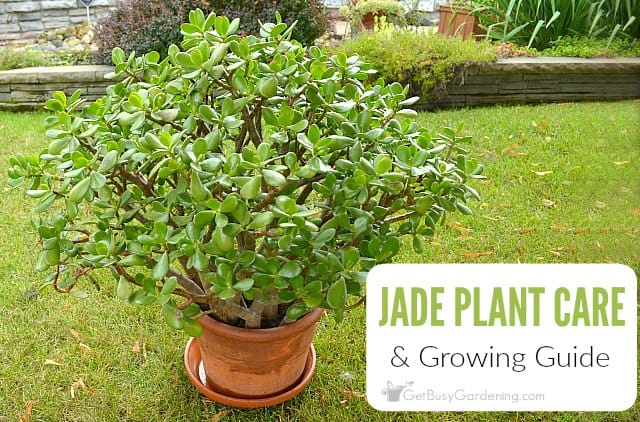




Elayne Merson says
I have six jade plants growing from leaves/cuttings and they are now all about 6 inches tall and healthy. Can I put them all in once larrge pot or do they do better being potted up separately?
Thanks for your help.
Amy Andrychowicz says
Awesome, congrats on getting your jade cuttings to root! You can plant them all into one pot or each in their own separate pots.
Marcela Rodriguez says
1 HOW to treat the rotten root?
2 My jade does not have a lot of leaves… how can I get my jade to look fully ? Thank you
Amy Andrychowicz says
If the roots and the base of your jade plant are completely rotted, the only way to save it is to take cuttings and root them. Otherwise, if the base is still firm and not rotting, then slow way down on watering it. The soil should dry completely before you give it any more water.
Sharon says
The leaves on my jade are turning white. What is causing this!
Amy Andrychowicz says
There are a few reasons why your jade plant leaves are turning white. First, it could simply be the variety you have, some types have white or partially-white or yellowish leaves naturally (e.g.: a variegated one). If it’s just spots, then it could be the residue leftover from salts/chemicals in tap water or fertilizers that were sprayed on the leaves, which is common on new plants from the nursery. But it could be something worse like mealybugs or mildew, both of which look like the leaves are getting moldy or cotton clumps.